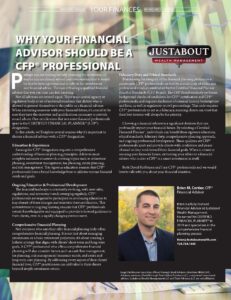
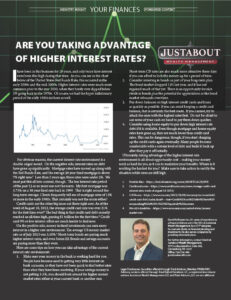
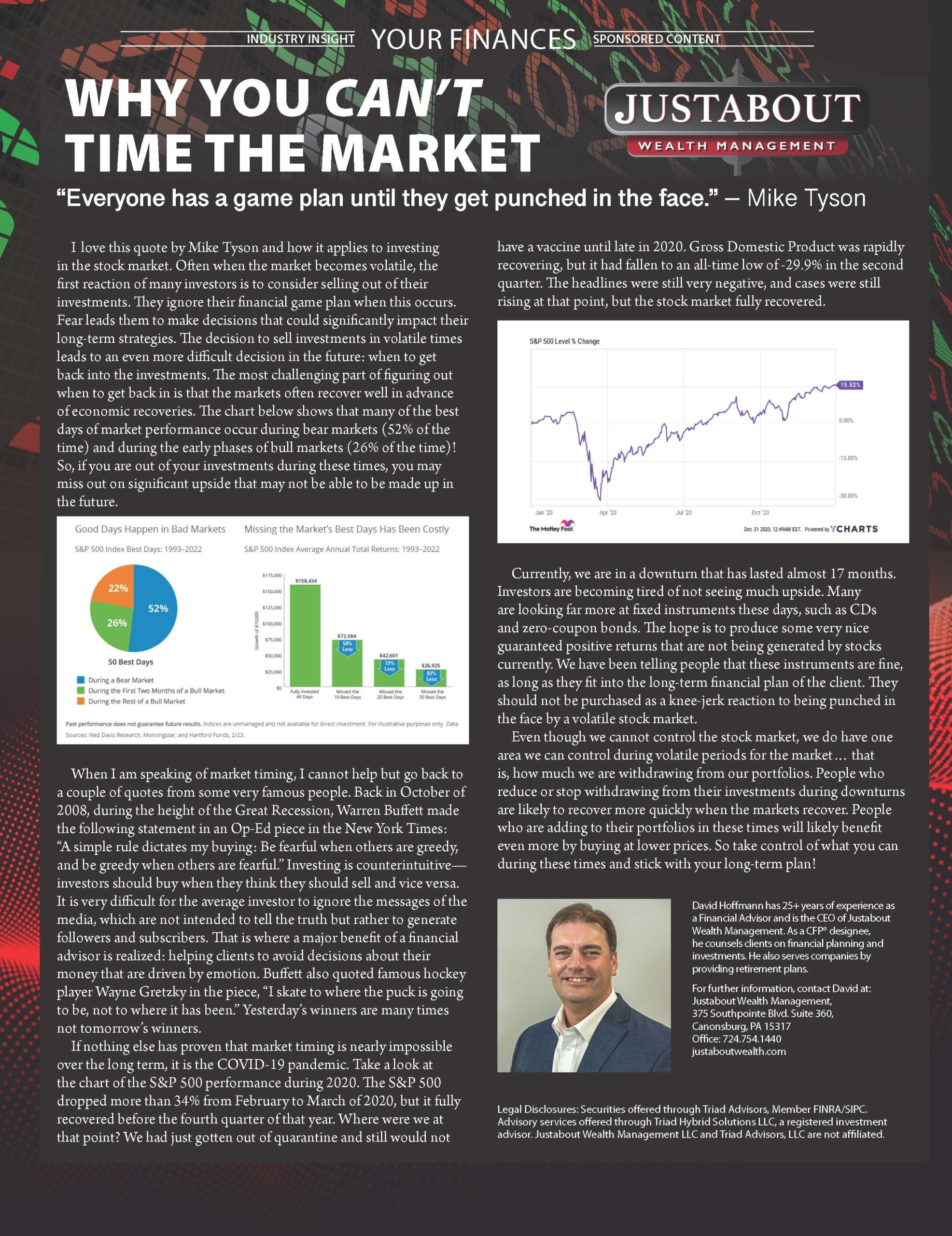
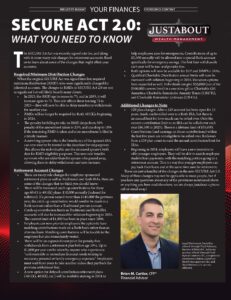
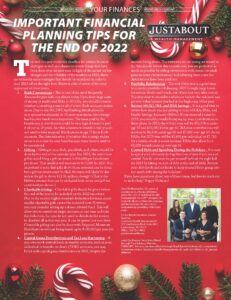
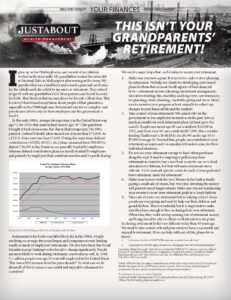

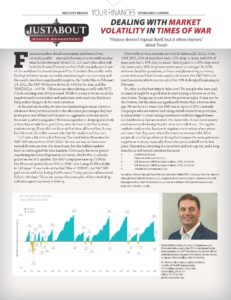
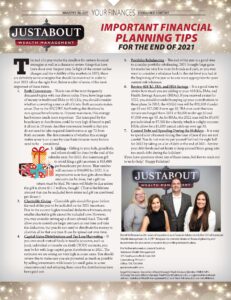
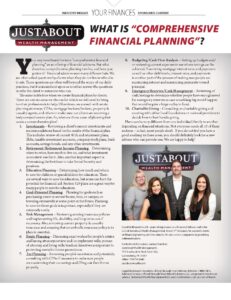
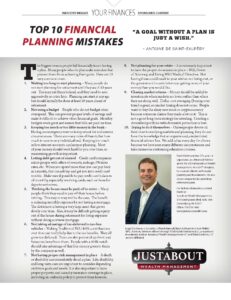
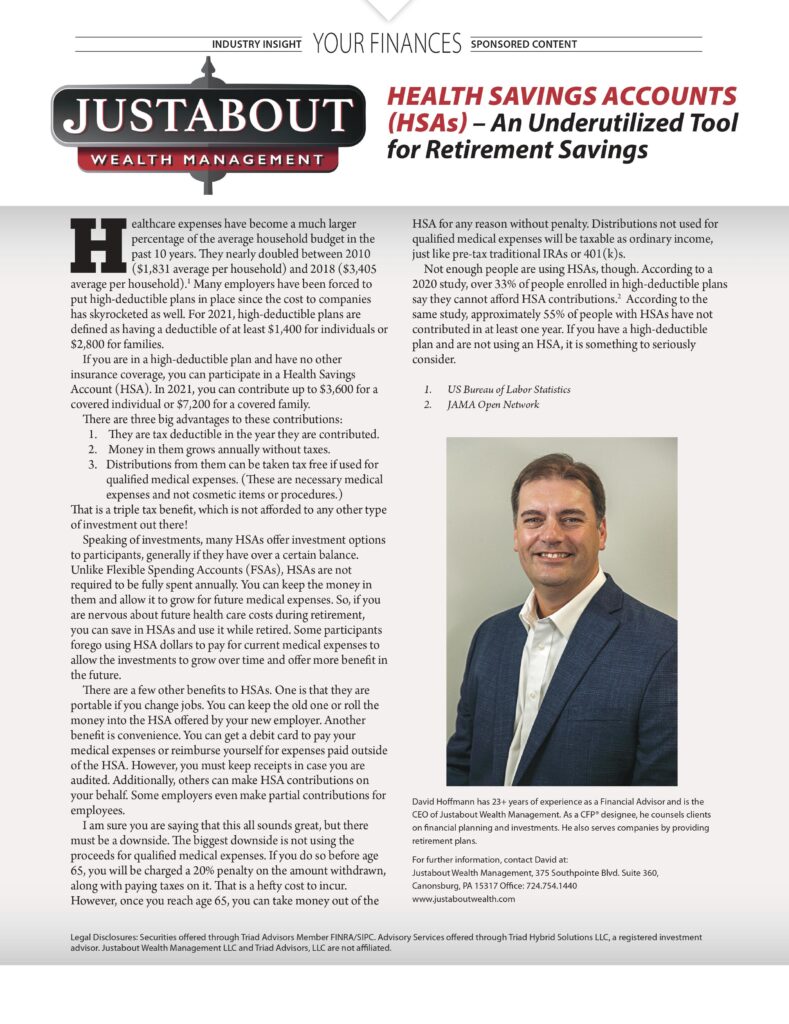
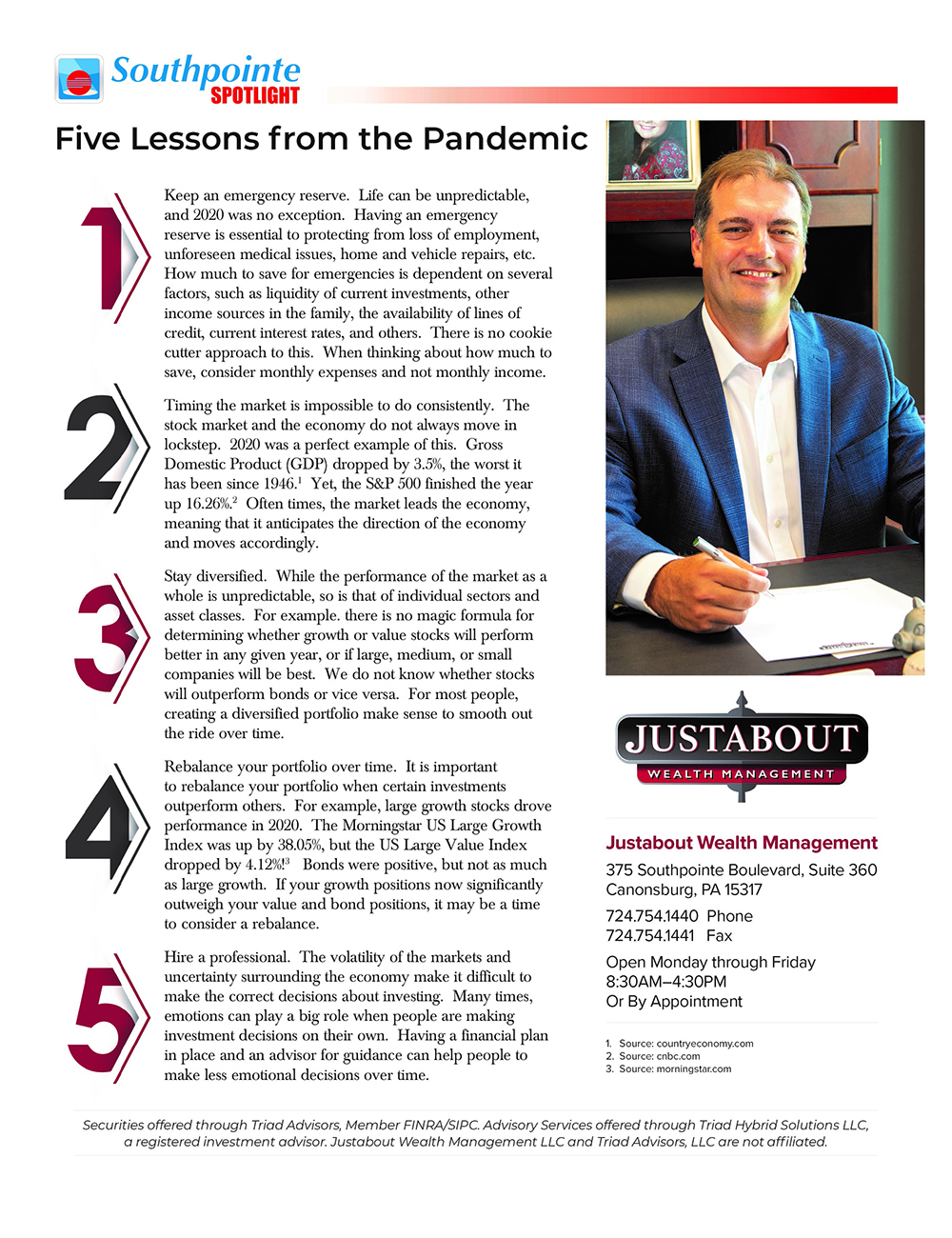
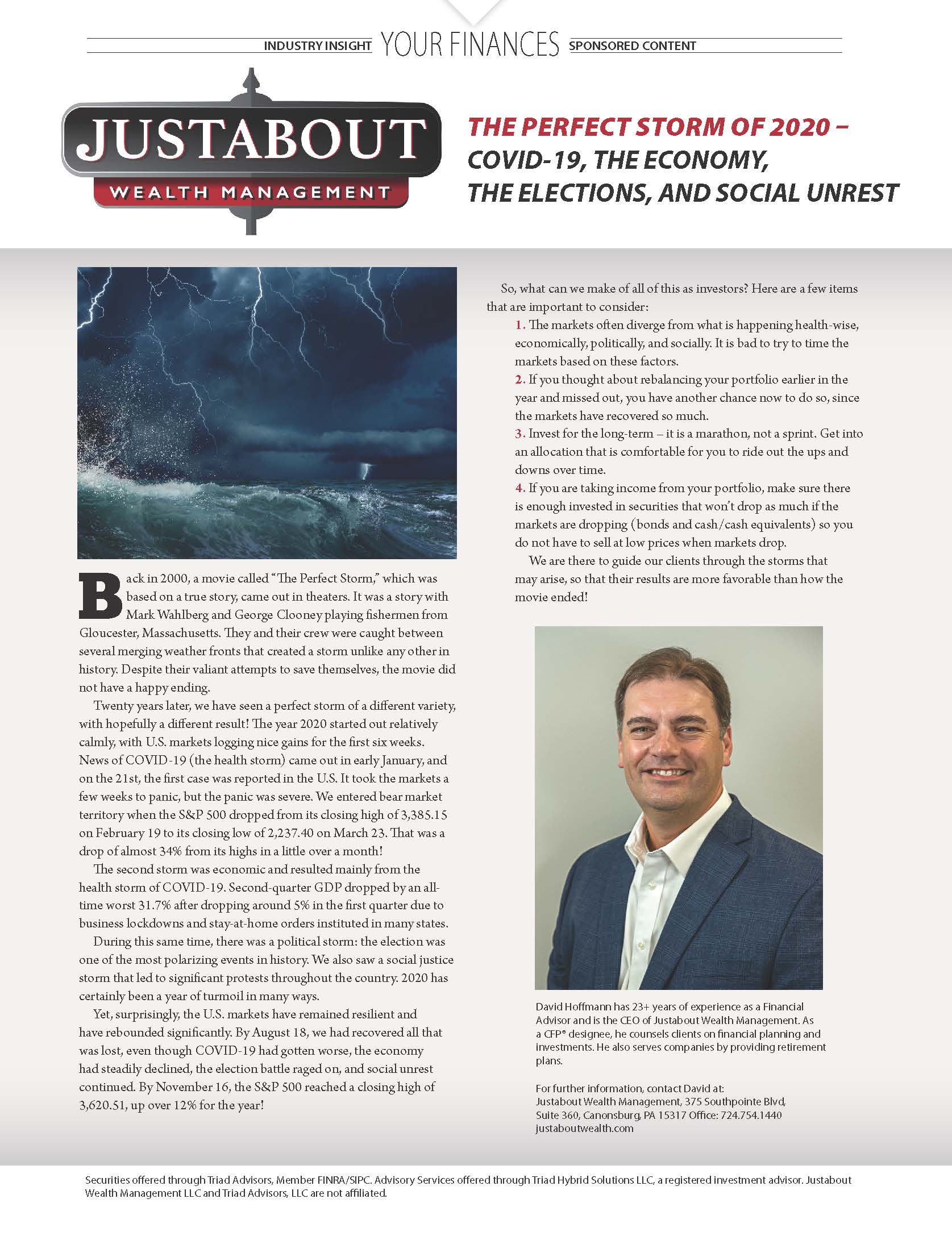
-Andy Warhol
$70,674 PER YEAR!
My son is currently a senior in high school, and I started doing the research last year on some schools in which he has interest. I started with my alma mater, Dickinson College, and that was the crazy number staring back at me from the computer screen. The cost of education has certainly changed in the 25 years since I graduated! According to the College Board, tuition has increased by well over 3% above the rate of inflation for public colleges and over 2% per year for private colleges over the past 30 years.1 One of the biggest issues with that increase is that wage growth has not even come close to keeping up with it. According to the Federal Reserve Bank of St. Louis, growth in wages was only .3% per year over the same time period.2
So, what does this mean for the average family? It means that planning becomes paramount in tackling this beast. “They always say time changes things, but you actually have to change them yourself.” We cannot rely on anyone but ourselves to solve this dilemma for us. There are several planning items that should be considered. One item is that we need to be more responsible in saving money for our children from birth to at least partially alleviate the pressure of paying for college with our income when they are enrolled. But what is the best way to save for education?
The government has given us a great tool for doing so with the Section 529 plans. 529 plans are like Roth IRAs for education – you put in after-tax money and receive distributions from them tax free if used for qualified education expenses. So, if you put in $20,000 and it grows to $40,000, you receive the $40,000 back without taxes. That is a significant benefit! Saving money in the child’s name in savings accounts or CDs with low interest rates will likely not keep up with the inflating cost of education, and this strategy may hurt when applying for financial aid. Assets in 529 plans can be owned by the parent, grandparent, or whoever gives the money to the child. Accounts in the child’s name are considered much more significantly in financial aid calculations. 529s can now also be used for private elementary and high school tuition – up to $10,000 per student per year.
Another item that should be considered is that there is a lot more money available, especially from private colleges, for kids who have high grades and test scores. Some schools offer more than half of the annual cost in academic aid for students above a certain GPA and test score. Our children need to help to change things for themselves. This aid can immensely benefit those who will not qualify for financial need-based aid. This often puts private colleges in the same price range as public ones. For example, Allegheny College in Meadville, PA offers merit-based scholarships of $5,000 to $35,000 per year.3 Getting the maximum amount would cut the cost by over half.
Speaking of need-based aid, parents should file the FAFSA form annually even if there is little chance for financial aid. There may be low cost loans or work study available even for high income earners. This is especially true for families with more than one child in college at the same time. The FAFSA is available on October 1st, and it should be completed ASAP. The “Expected Family Contribution” (EFC) will be calculated and sent to the family. This is the number used by colleges to determine how much aid to give to students.
Another way that some families are saving money on college these days is having students go to community college for a year or two to take their core courses. This method has gained popularity over the past several years as the cost of college has continued to rise. This can also be beneficial if the student is unsure of their major upon entering college. Coming out of college with less debt puts students in a better financial position to start out.
In summary, we need to take things into our own hands, create a plan, and start saving sooner rather than later for college expenses in order to lessen the burden when children go to college. Academics are extremely important to receiving merit-based aid, and need-based aid should be considered even for those who think they make too much to qualify. Lastly, consider community college for student who are uncertain or to save money and allow them to start their careers with less debt.
1. Source: https://trends.collegeboard.org/college-pricing/figures-tables/average-rates-growth-published-charges-decade
2. Source: https://fred.stlouisfed.org/series/MEHOINUSA672N
3. Source: https://sites.allegheny.edu/finaid/types-of-aid/
AGE CHANGE FOR REQUIRED MINIMUM DISTRIBUTIONS (RMDs) FROM IRAs/401(K)s
The Act will change the age for taking RMDs from 70 ½ to 72. This is a benefit to those who do not wish to take these distributions but instead leave the money in the accounts growing tax-deferred for as long as possible. This provision only applies to people who turn 70 ½ in 2020 or after. For those who already did in 2019 or before, they must continue their RMDs.
IRA CONTRIBUTION AGE RESTRICTION LIFTED
IRA owners are now allowed to make contributions at any age if they continue to work, rather than being forced to stop at age 70 ½. However, if they plan to make a charitable contribution from their accounts in the same year they are contributing to them, the $100,000 maximum deductible amount will be reduced by the amount of the IRA contribution.
IRA/401(K) DISTRIBUTIONS NOW ALLOWED FOR QUALIFIED BIRTHS/ADOPTIONS
Individuals can now take up to $5,000 from an IRA for qualified expenses related to a birth or adoption of a child without penalty. There will still be ordinary income taxes due if it is pre-tax money in the plan.
STRETCH IRA ELIMINATED
This is the part of the Act that will cause the most angst for many people. The Stretch IRA, which allowed non-spouse heirs of retirement plans/IRAs to stretch distributions over their lifetime, has been eliminated. The Stretch IRA allowed beneficiaries to spread the distributions, and therefore the taxes, over their life expectancies. The Act now requires distributions to be taken over 10 years maximum. This becomes an issue when, for example, a parent dies and leaves the IRA to one or more children. The children must take distribution over 10 years, unless they are minors. If the IRA is large, this could force beneficiaries into a much higher tax bracket for 10 years. (NOTE: There are 5 classes of beneficiaries who are still eligible for the Stretch: surviving spouses, minor children (not grandchildren) until they reach age of majority, disabled individuals, chronically ill individuals, and individuals within 10 years of age of the IRA owner (mostly siblings).) Significant planning may be necessary to combat this issue. One example is that IRA Trusts that have been set up as part of estate planning may no longer be beneficial. Those who have a trust named as their retirement plan/IRA beneficiary should call their estate planning attorney.
There are a few potential fixes for this issue:
(1.) The IRA owner may convert the retirement plan/IRA to a Roth IRA over time, thereby paying the taxes over the time before the heirs receive the asset. This could reduce the amount of tax due over time, since the conversions will likely take place when the IRA is worth less (assuming it grows over time).
(2.) Life insurance is another potential solution to this problem. Families may consider a life insurance policy to pay for the tax hit of having to cash in the IRA more rapidly.
(3.) The retirement plan/IRA can be used for charitable giving, and other assets can pass to heirs.
(4.) Distributions can be taken by the owner earlier than age 72 to spread out the taxes over time.
(5.) Get married if you are not, since spouses can still stretch the IRA over their lifetimes!
The bottom line is that the SECURE Act will require many people to do significant planning to avoid major tax hits in the future. The potential ramifications of this Act and other legislation are a great example of why people should hire a financial advisor.
MULTIPLE EMPLOYER PLANS (MEPs) TO BE ALLOWED
Unrelated companies will be allowed to join with each other to form a pooled employer plan starting in the plan year beginning after 12/31/2020. This can potentially benefit small companies that cannot afford to have their own plans, as it will create economies of scale for them. It will also potentially help companies by providing better fiduciary oversight and by reducing individual administrative requirements. A pooled plan provider (PPP) will be designated and will be responsible for the oversight plus all the administrative work, including loans, hardship withdrawals, and distributions to participants. Most of the fiduciary requirements will be fulfilled by third parties, thereby reducing the responsibilities of the company to items such as providing materials to participants and handling deferrals from participant paychecks. This will apply starting in the plan year beginning after 12/31/2020.
INCREASED TAX CREDITS FOR SMALL EMPLOYERS STARTING RETIREMENT PLANS
Small businesses that are starting a new retirement plan will be eligible for a tax credit of up to $5,000. In the past, the maximum tax credit was $500, but that is now the floor. Companies will earn a tax credit of $250 per eligible non-highly compensated employee up to the max of $5,000. So, a company with 20 or more eligible employees can max out at $5,000. This is intended to help companies with the startup costs of plans, which can be higher than ongoing costs. This is available as of 12/31/19.
TAX CREDIT FOR SMALL EMPLOYERS ADOPTING AUTOMATIC ENROLLMENT
Small business can earn a tax credit of $500 per year for 3 years if they adopt an automatic enrollment program for the company plan. Automatic enrollment is when an employer can enroll employees in the plan unless the employees affirmatively elect not to participate. This is meant to increase participation overall, since many people do not take the time to enroll on their own. This is applicable as of 12/31/19.
AUTOMATIC ESCALATION OF RETIREMENT PLAN CONTRIBUTIONS INCREASED
If a company chooses to adopt auto escalation to satisfy nondiscrimination testing, they can now max that out at 15% of compensation. It was previously 10%. Automatic escalation is when a company automatically increases employee contribution percentages each year to get them to save more for retirement. For example, a company may automatically increase employee contributions by 1% per year unless the employee affirmatively elects not to participate.
PART-TIME EMPLOYEE PLAN ELIGIBLITY WILL BE LESS RESTRICTIVE
Employees who work part-time will now be allowed to participate in the plan with either (1) one year of service with at least 1,000 hours worked, or (2) three consecutive years of at least 500 hours worked. However, these employees can be excluded from matching contributions and/or plan testing. This will be effective for plan years beginning after 12/31/2020.
ACCESS TO ANNUITIES IN RETIREMENT PLANS WILL BECOME MORE RELAXED
Lifetime income from annuities will be available for those who may benefit from it. Plans that do not have this benefit will be permitted to transfer assets to another provider with it available. There is a lot to be figured out here, as annuities are complex and varying, depending on the provider.
In the end, the SECURE Act has some favorable and unfavorable provisions, depending on individual circumstances. On the business side, there is really nothing negative in the Act. As with any change is the law or tax code, you should consult a professional about the implications for you. The need for a professional financial advisor becomes clearer each time major legislation such as this is passed.

